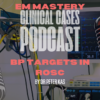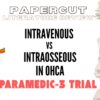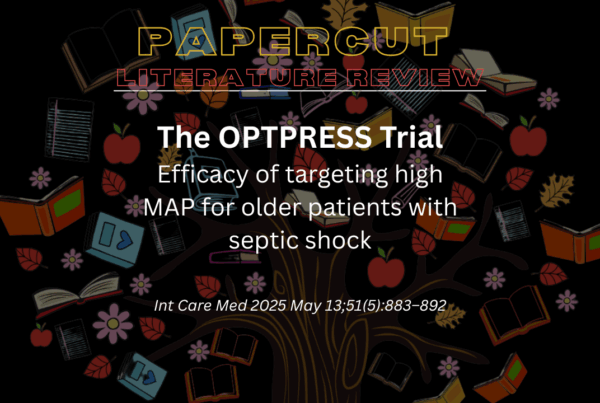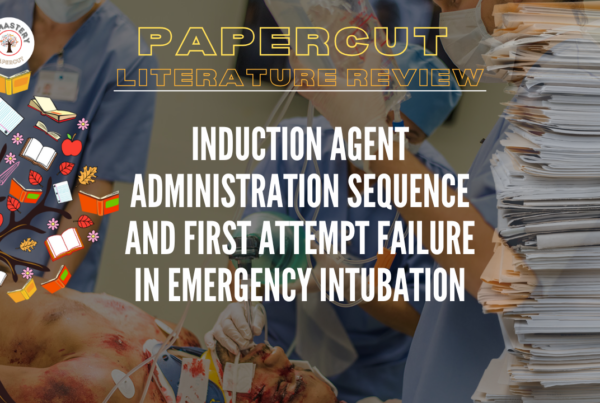 The patient with acute vestibular syndrome can present a major diagnostic challenge. The patient with dizziness can be a tricky case to diagnose. In my preparation for the ‘Vertigo’ talk I get to give at this year’s EMCORE I came across the HINTS study (Stroke 2009; 40 3504-3510). It’s one you have to read.
The patient with acute vestibular syndrome can present a major diagnostic challenge. The patient with dizziness can be a tricky case to diagnose. In my preparation for the ‘Vertigo’ talk I get to give at this year’s EMCORE I came across the HINTS study (Stroke 2009; 40 3504-3510). It’s one you have to read.
I have been a big fan of the Head Impulse Test, to assist us in diagnosing central causes of vertigo. We know that a normal Head Impulse Test is the best bedside predictor of stroke. In fact it is comparable to an early MRI. However it is not a perfect examination. Some patients with an abnormal test(indicating a peripheral lesion), will in fact have a pontine stroke.
THE HINTS STUDY, looked at the diagnosis of stroke in acute vestibular syndrome and assessed the sensitivity and specificity of 3 bedside ocular tests for differentiating stroke from acute peripheral vestibulopathy:
Head Impulse (HI), Nystagmus (N) and Test-of-skew (TS), ie HINTS
This three-step oculomotor examination is more sensitive than early DWI MRI.
A FEW WORDS ON THE STUDY
It was a prospective study of 101 patients (after exclusions). The initial presentation was of acute vestibular syndrome, which included vertigo, gait unsteadiness, motion intolerance, nausea/vomiting and nystagmus.
97% of patients had an MRI at the time of admission. 3 patients had a CT instead of an MRI; In all 3 cases there was a cerebellar stroke on CT.
Here are some interesting observations:
(i) Patients with severe truncal ataxia, ie inability to sit without use of arms or assistance had a central lesion in all cases. (p < 0.001)
(ii) Medially located brainstem strokes/haemorrhages were associated with oculomotor paralysis, lateral brainstem and cerebellar were not (p < 0.001)
(iii) Lateral medullary/pontine and inferior cerebellar strokes mimicked acute peripheral vestibulopathy by by having no general neurology or oculomotor signs. About ⅓ of these patients have severe truncal ataxia.
(iv) Skew deviation was present in 16 of the 101 patients. 59% were associated with lateral medullary/pontine strokes. It was however also present in one patient whose final diagnosis was acute peripheral vestibulopathy.
(v) Head impulse test was positive, predicting a benign aetiology in lateral pontine stroke, whereas skew correctly predicted this in ⅔ of cases.
(vi) These 3 examinations were found to have a sensitivity of 100% and specificity of 96% for a central lesion.
(vii) HINTS was more sensitive in indicating a brainstem or cerebellar stroke than:
– general neurological signs (100% vs 51%)
– obvious oculomotor signs (100% vs 32%)
– or both of the above together(100% vs 67% p < 0.001)
(viii) MRI with diffusion weighted imaging was falsely negative in 8 patients with an ischaemic stroke. Scans were done at 8 – 48 hours following symptom onset. These were redone and positive on average 3 days later.
There were some limitations to this study, including blinding (or lack of it), internal and external validity and also that high risk acute vestibular syndrome patients were chosen.
However there is no doubt, that these tests should be an important part of our approach.
I now include them as part of the neurological exam for all my patients presenting with vertigo.
The other examinations that I consider a must are:
(i) GAIT and test for truncal ataxia
(ii) Long tract signs.
Good luck with the vertigo patient.
Peter Kas










[…] the talk on vertigo at the EMCORE, however several people have asked, after reading the blog on the HINTS study, for a quick summary of my approach to the patient with dizziness. Here is a very, very quick […]